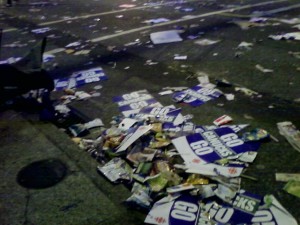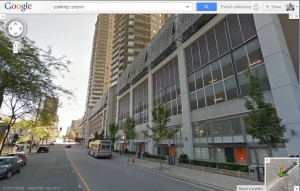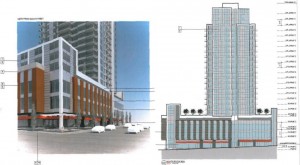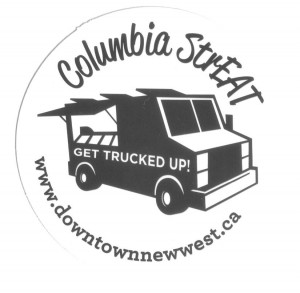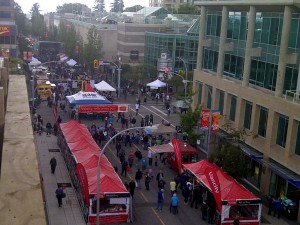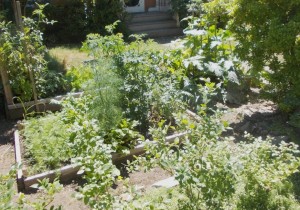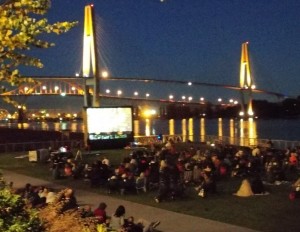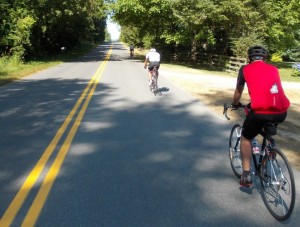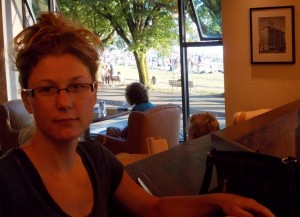Year: 2013
Shoreline Cleanup 2013
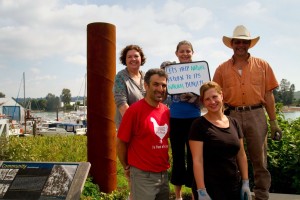 |
| Site prep team on Queensborough’s South Dyke Road last week: (LtoR) Karla Olson (author), Patrick Johnstone, Jaycee Clarkson, Lisa Egan and Harry Buchholz. |
Help Nature Return to Its Natural Beauty
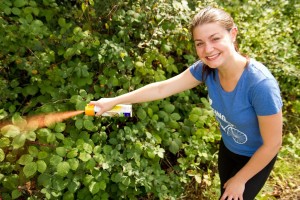 |
| Jaycee Clarkson, NWEP member, spraying blackberry in prep for the Invasive Plant Pull Shoreline Cleanup 2013 |
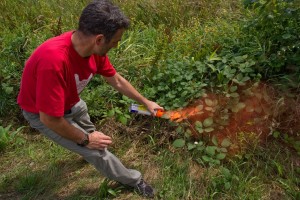 |
| Patrick Johnstone tagging invasive plants for the 2013 Shoreline Cleanup |
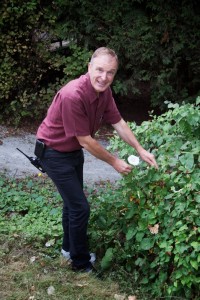 |
| Claude Ledoux, City’s Parks and Horticulture Manager, identifying morning glory. |
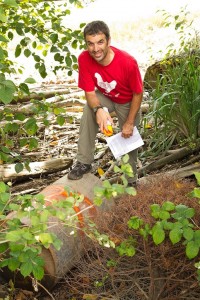 |
| Patrick Johnstone, NWEP member, standing on an oil drum recently washed up onto the Shoreline |
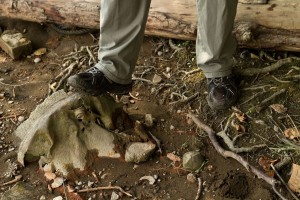 |
| Patrick Johnstone Standing on Oil Drum Submerged in our NW Shoreline |
“Getting to Yes”
Further to poorly-framed arguments supporting specific hydrocarbon-transportation projects, there was this recent opinion piece written by John Winter, who is the President and CEO of the British Columbia Chamber of Commerce. It was, frankly, disappointing. Not because I disagree with Mr. Winter, but because it was so poorly argued.
The opinion was in response to this previous piece in the same Important CanWest Newspaper of Record. In the first piece, economist Robyn Allen pointed out that the economic arguments being made by Enbridge on the Northern Gateway Pipeline proposal were “just not true”. Ms. Allen, in a tightly-argued 600 words, explained the factual misrepresentations in Enbridge’s claims, from the perspective of an economist, using Enbridge’s own numbers. No-where does she suggest the Northern Gateway, or any other project, should be stopped. Instead, she simply criticizes, point-by-point and from a position of considerable knowledge, the mis-characterization of the economic impact of the project as presented in the proposal. She then suggests:
“In the interests of transparency and accountability, British Columbians deserve better than what Enbridge seems capable of delivering.”
Mr Winter’s response to this argument does not engage in the same detailed analysis of the data presented by Enbridge, nor does he directly address any of Ms. Allen’s actual points. Instead he engages in over-the-top and largely fact-free rhetoric. He further characterizes her argument as an “intellectual exercise” to undermine the project:
“It’s disturbing to see how much British Columbian ingenuity is being channelled into our province’s alarming — and growing — ‘culture of no.’ And for what gain?”
I don’t know where I got this idea, but I suspect the gain Ms. Allen was aiming for is that the conversation be “in the interests of transparency and accountability”.
You see, Ms. Allen is a scientist who studied, spent a career working in, and teaches economics. It is her job to scrutinize economic augments and determine if they are fact-based or not. If Mr. Winters disagreed with her factual information, he might have made a counter-point. Instead he engages in a bunch of irrelevant hyperbole:
“In virtually every corner of the province, we’re seeing the same thing: Smart, highly environmentally responsible projects that can employ our children and keep our towns alive are being battered, paralyzed and stomped out.”
I’m not sure what dusty corners of the Province Mr. Winters is spending his time, but the vast majority of large industrial projects in BC are being stomped upon only by rubber stamps. If one looks at the BC Environmental Assessment Office records, one can look at the history of project proposals in BC since the Act came into force in 1995.
Completed: 128
Refused: 3
Pre-application: 69
Exempt: 22
Terminated: 6
Under Review: 10
Withdrawn: 21
Total: 259
So of 259 projects, exactly 3 have been refused permits. That is just over 1%. In contrast, 150 were either issued certificates or were found to be exempt from the process. That is 58%. If you re-calculate those numbers without including 79 that have not yet reached the decision stage, 83% of projects have achieved approvals. Where is the alleged battery occurring here?
As an aside,the Federal EA process numbers are very similar. Well, they were, until the Federal Government in one stroke of a pen in 2012 changed the Federal EA Act, such that thousands of Federal Environmental Assessments will simply not happen now. Where before there was scrutiny, proponents can now fill their boots.
But back to the Project in question: the Northern Gateway Pipeline. Mr Winters continues:
“So there’s a lot at stake here. And frankly, what’s yet to be decided has nothing to do with project economics (which, Ms. Allan, are frankly settled), but rather how we balance economic value against other B.C. priorities, as the Joint Review Panel is assessing.”
This is actually where Mr. Winters is wrongest. Ms. Allen has aptly demonstrated that the project economics are far from settled, and there still exists debate. At the very least, some clarification is required from the project proponent.
It is interesting that many of the environmental protection measures that come out of this type of Environmental Assessment are codified in the review documents as conditions of approval. For example, if the exclusive use of double-hulled tankers was promised by Enbridge, then using single-hulled tankers would be a breach of the Approval, and the certificate can be removed, shutting down the project. However, none of the “economic” commitments have the same status. Enbridge could promise to employ every adult person north of 50 degrees, then only employ three people once the assessment is done, and there would be no recourse for the Province or communities to whom the promises were made. I’m not saying they would do that, but that makes it important that any assessment of the anticipated economic impacts be as accurate, fact-based and defensible as possible- we only get one crack at that part of the project review.
“And with this project, as with any that proposes such substantial benefits for B.C., we hope that British Columbians will take a close look at what’s to gain here. We certainly don’t ask that environmental or community concerns be sidelined. But we’d ask that jobs and economic value not be sidelined as well.”
Ms. Allen is not sidelining economic values, she is assuring they are properly assessed so that we can, as British Columbians, take the close look at what’s to gain for which Mr. Winters is asking. Surely, the CEO and President of the BC Chamber of Commerce wants the public to be provided with factual information, both when they question the economic gains, and when they question the environmental impacts. That is why we have Environmental Assessments, and that is why responsible businesses engage in them.
Alas.
The entire argument presented by Mr. Winters is framed around “Getting to Yes”, which has become one of those abstract rhetorical phrases that everyone thinks they understand, but in reality it means different things to different people, and is actually completely meaningless. Mr. Winters suggests we need to “Get to Yes” on these projects. But who is it, exactly, that needs to “Get to Yes”?
Does the Provincial Government need to “Get to Yes” by bypassing (or tossing out a la Stephen Harper) their own environmental assessment laws, ignoring the environmental protections afforded by Provincial Law, Federal Law, and our constitutional responsibility to First Nations?
Does the Media need to “Get to Yes” by continuing to publish fact-free editorials that would have us believe that 3 certificate refusals out of 256 applications is some sort of war on resource development?
Does the public need to “Get to Yes” by agreeing to whatever Enbridge says, and refusing to listen to people who point out factual errors in what they promise?
No. It is Enbridge who needs to “Get to Yes”. They will get there by providing realistic data about what they have to offer BC, and what the risks to BC (economic and environmental) are. Then they need to convince us that those risks are managed and mitigated to the point that the economic development they are offering us is sufficient payment.
It is possible that Enbridge will not, with this project, ever “Get to Yes”. But that would not be from a failure of British Columbians to dream, it would be from a failure of Enbridge to convince us they are good for our future.
Parking variances for new developments, and other Green things
Remember that whole Downtown Parking Strategy and the concomitant “Tear Down the Parkade” movement? What ever happened with that?
There are two recent news stories that are directly relevant to this study, both about newly-proposed developments in the Downtown.
The first development plan is for a location in deep need of redevelopment: the mid-block area on the north side of Carnarvon across from Plaza88. The so-called Carnarvon Gardens (ugh…) development is creating a bit of a disagreement on Council because of various challenges in providing parking space and the impact on the neighbourhood form.
At least part of the reason for debate here is the location across the street from Plaza88, whose own parking situation is an ongoing cause of chagrin. As I have said many times before, Plaza88 is a great idea as far as Urban Planning, but suffers from some poor execution as far as Urban Design. One of those issues is the wall of parking lots that provide the facade of the building. The multiple stories of above-ground parking exacerbate the canyon effect on Carnarvon, at least partly because it is not “human space”, but machine space. If that facade was windows and balconies with evidence of human life, the effect would be much more gentle. If it was set back from the street by a few metres, it would be even better.
The proposal for Carnarvon Gardens, right across the street, is to have a similar 5 stories of above-ground parking, but to hide most of them behind a wall of office/commercial space, much like the bottom two floors at Plaza88. The top floor would not be so obscured, nor would the Victoria Street facade or the little side-lane that connects Victoria and provides access to adjacent buildings (9th Street?).
The development looks great- (you can see it in these Meeting minutes, starting down on page 88) – 23K sq.ft of office space, 10K sq.ft. of retail, and 198 residential units. But even back in July, Council asked questions about the plan for parking. Originally, 308 parking spaces on 7 floors (2 underground and 5 above ground, at least on the Carnarvon side) was proposed, although the current Bylaw requires 353 spots. After sending the July plan back for more consideration, the proponent came back with a similar proposal (two underground parking floors, five above ground) but have now reduced the number of parking spots, based on two studies.
The Downtown Parking Plan study suggested 278 parking spots were required here, where the Proponent’s own study indicated 260 were required to service the building’s needs. The Proponent, however, is willing to build 294 spots- as they figure that is the magic number that balances the cost of building parking with the “marketing goals” for the condos. They also balked at the idea of moving the exposed 5th floor parking down underground where it will be out of site, presumably because of increased costs.
During discussion at Committee, Councillor McEvoy raised an excellent point, in that there will be a time (perhaps now?) that we stop thinking about the street presence on only one side of a building. This development “backs” on Victoria Street, but other businesses and potential future developments front on Victoria. So why is a parking lot facade that is not acceptable on Carnarvon acceptable on Victoria? If we want the best revenue-generating and job-creating parts of our renewed Downtown to expand, then we cannot afford to create more “dead space” roads. More imagination is needed here.
The second development plan is much more preliminary, according to this story, but has many parallels other then being three blocks to the east. This building will have 7,500 sq.ft. of commercial and 282 residential units, planned for rental as opposed to market condos. Here, the Bylaw parking requirement is 410 spots, the Downtown Parking Study suggests 218 are needed, but the Proponent is proposing 169.
So two concurrent (or close enough) developments one block uphill from Columbia Street, and both want to save money by not building parking. A bit of quick math gives us:
Bylaw Requirement: 763 total spaces.
Parking Study demand: 496 total spaces.
Proposed to be built: 463 total spaces.
So depending on how you count it, there are between 33 and 300 parking spots being left on the table. These are spots the Developer is required to install according to existing City policies, but is asking for an exemption because they won’t make any money from them.
Now compare those numbers to the “peak use rate” of the Front Street Parkade according to this report to council. 38% of 800 parking spots is 304. Now you (hopefully) see where I am going.
This is, ultimately, the solution to the Front Street Parkade problem – distributed parking in new developments. I’m not saying both of these buildings need to build parking to 100% of their (now dated) Bylaw requirements, but there needs to be a discussion about how new developments provide public parking at rates similar to the Parkade. 30 to 50 lots in each new building, the construction paid for by the Developer and the rental income going back to the Developer (unless, of course, they choose to sell the parking lot rental business off) to offset the cost.
Instead of pulling into a decrepit waterfront white elephant, one can find public parking in any of a half dozen buildings within a block or two of your destination. And we get a major part of our waterfront back.
This is not as easy as it might seem, though. We need to convince the Developers that it is worth their time and money. We also need to worry about the urban form issues that Councillor McEvoy raised, and that threaten to make Carnarvon and other streets into car park canyons. However the first step is to stop handing out variances for every new building so Developers can save the hundreds of thousands of dollars it takes to provide market parking. Instead, we need to create the market incentives to make it worth the Developer’s time to install public parking as part of every new large development.
As for the Parkade, it is not giving up without a fight. It has apparently been exposed to Gamma Rays, and vents its occasional rage through Twitter:
So there’s that.
Getting serious about Coal
Hi folks! Great to be back. August was killer, and many stories will be told, I’m sure. Now back to your regular programming.
I wasn’t sure what to write about at first, but look what the good people at one of the local CanWest Serious Newspapers of Record dropped on my lap – like manna dropped on the desert floor of my blog…
I stumbled across a pretty hilarious “op-ed” in the Vancouver Sun yesterday. I thought maybe it was clever satire in the Colbert Report style, but when I saw the byline and noted the affiliation with Patrick Moore and his Greenwashing Cabal, I realized the writer was trying to be serious. This is and example of why I stopped lamenting the demise of dead-tree news, if this is the best they have to offer. At least the Province has a decent Sports Section.
The opinion (if I can paraphrase) is that mining and export of coal is good, right, and ethically the best thing we can do, because without us supplying them coal, the developing world is doomed to eternal poverty and we will be able to get fewer gadgets from China; climate change be damned.
However, there are deeper issues with the opinions stated, which I would like to address individually:
“First, despite the current trend away from coal to cheap gas, China and other developing countries will need coal for the foreseeable future. The morality of denying them access to it is questionable. For hundreds of millions in China and elsewhere, consuming coal for electricity and heat is not a choice.”
This is sort of true, except that it isn’t. Burning coal for electricity and heat is every bit a choice for emerging economies as it is for us in British Columbia. Just like us, it is an economic choice, made for economic reasons by economic satisficers. In British Columbia, we have decided, despite our ample coal resources, to not burn coal to generate electricity or heat, because of the negative consequences to our communities, and instead generate electricity by (in descending importance) through hydroelectricity, by burning oil and gas, wood waste, garbage, and other alternatives. Cost may or may not have been the primary driver for BC making that choice, but it was no doubt a choice we made for economic reasons. Other countries have made different choices, based on their local economic situation, but it is a choice.
“Removing North American coal supplies from the market will not reduce consumption, but will likely increase prices.”
Notice how Patrick Moore’s young apprentice has mastered the self-contradictory argument skills of his master. If we fail to provide a cheap route to get coal to market, or otherwise restrict supply, coals prices will indeed increase, if one believes in supply and demand economics. Of course, the other half of supply and demand is that if the prices go up, demand will drop, as the alternatives to coal become more economically attractive. This will, no doubt result in reduced consumption. You can’t have one without the other, as coal is a commodity with negative elasticity.
“It will also encourage coal mining in less safe jurisdictions. Is it right for us to impose such hardships on our fellow human beings while presenting no current practical alternatives?”
The thinking gets yet sketchier here. If we don’t supply coal, then the increased value of coal may, indeed, increase coal mining in other jurisdictions, some of them being “less safe” than ours. However, compare this discussion of “imposing hardships” on others by encouraging resource extraction with the rest of this op-ed (where resource extraction is seen as the ticket to prosperity by driving economic development and innovation), to find deeper self-contradiction:
“One way some pundits make such imprudence look clever is to style natural resource wealth as a handicap, as if knowledge-based sectors falter when resource extraction thrives. But this is a false argument because the extractive sectors are knowledge-based and already rich with intellectual capital. Just ask any geologist, engineer, or GIS software designer. Resource wealth drives innovation, not the opposite.”
So resource extraction is good for every aspect of our economy- but we would not want to “impose that hardship” on developing nations where it might be “less safe”, would we? Which is it Grasshopper?
“Another inconvenient reality is that poverty in the developing world will worsen if we manipulate energy supplies. Industrialization reduces poverty by releasing agrarian families from mere subsistence. It creates higher paying jobs, enabling increased education for children and autonomy for women. Over the long term, this results in a more affluent, service- and knowledge-based economy. The energy driving this gradual process is coal. Blocking North American coal supplies to Asia risks driving up the cost of living for the world’s poor.”
This is an excellent example of the Bifurcation Fallacy– or more colloquially, a False Dichotomy, very popular with Dr. Moore’s writing. The writer here is suggesting that without coal, the developing world cannot possibly achieve autonomy for women or any of the other benchmarks of development. Clearly this is bullshit. There are many paths to prosperity and higher levels of development, and there are many ways a developing nation can fulfill its energy needs. The corollary argument also does not work, as ample supplies of cheap energy hardly guarantees egalitarian societies. Saudi Arabia anyone?
Also, let’s get over this illusion that the world’s poorest people rely on coal. The world’s 2.5 Billion poorest people have no access to coal at all, but instead burn wood or dung as their one and only fuel source. China (the oft-repeated example here) produces 47% of the world’s coal, but burns 47% of the world’s coal. China is not a net coal importer – any coal it does import or export is for economic trade reasons, not for the benefit of supplying energy to its poorest citizens. If you list the 10 countries that consume the most coal in the world you end up with this:
Country Tonnes % Member GDP rank
China 3,826,869 47% G20 2
USA 1,003,066 12% G8 1
India 721,419 9% G20 9
Russia 256,691 3% G8 10
Germany 256,661 3% G8 4
South Africa 201,403 2% G20 28
Japan 192,854 2% G8 3
Poland 152,988 2% 24
Korea, South 139,481 2% G20 15
Australia 131,174 2% G20 12
So 85% of the world’s coal is consumed in only 10 countries, 4 of them in the G8 (the 8 largest economies in the world), and all the rest but Poland are in the G20. All of them are in the top 28 largest economies in the world. If you take the coal burned by the 20 member countries in the G20, the other 180+ countries in the world are left with only 11% of the coal. The vast majority of coal is being burned by the relatively well-off in developed economies, not by the poor in the Third World.
Giving the poorest nations a lump of coal is much more Grinch-like than Santa-like.
“Yes, the negative environmental, health and safety impacts of coal mining and use are significant. Poor countries are not oblivious to coal’s negative impact, but they need it at present to better the standard of living for their citizens. Why not provide these countries with North American coal that’s mined according to tough environmental and safety guidelines, creating well-paying jobs and prosperous communities on this side of the Pacific?”
Am I the only one confused by this line of reasoning? It seems to suggest we are actually helping out the poor by facilitating the introduction of negative health, environmental and safety impacts on them, while we get the well-paying jobs and prosperous communities? How does a person in India benefit from Canada’s “tough environmental and safety regulations” when a coal-fired power plant next to his house in Calcutta has no such regulations?
“And why not encourage them to use the latest coal burning and scrubber technologies to reduce air pollutants?”
Ahhh… the simple solution. Of course. Except it is untenable and contradictory to the rest of the argument. How do we “encourage” another country to install expensive scrubbing technologies? I thought this article was arguing that coal was used by poorer countries because it is affordable and they are so teetering on the edge of energy collapse that if we make it any less affordable by lowering the supply, the poor will go without energy and suffer. Now the article suggests if the poor would just get their act together and spend some money scrubbing their dirty coal, it will be just fine. His might be the paragraph that best straddles the line from ignorance to parody.
Note: you really can’t “scrub” the greenhouse gasses out of coal emissions, but I digress.
“The problem with public discourse on coal is that simplistic answers are preferred over holistic, well-reasoned and defensible solutions. Coal adds to global warming and therefore we should ban it, they say. But the truth is we can’t ban coal. Australia will be more than happy to rake in the billions we will be leaving on the table for them.”
Here we have another common Logical Fallacy known as the “Strawman”. Make a hopelessly weak version of the opposing view, then have fun flogging that weak position.
The arguments against the expansion of coal exports through BC ports are not simplistic, but remarkably complex and multi-faceted. Some raise concerns regarding the health impacts of coal dust moving through our communities, some are concerned about the implications of moving bulk coal through our sensitive ecosystems, some argue that it is unethical to mine and export a product that is simply too dirty and unsafe for us to burn domestically – If coal is too dirty for BC to burn for energy (as our Provincial Government has codified in law), why are we OK with profiteering from its use elsewhere? Others argue that the mining and export of coal without accounting for the carbon impacts violates the spirit of, if not the letter of, the Provincial Greenhouse Gas Emission laws.
Holistically speaking, coal is a disaster for the planet. It was a pollution disaster in London in the 19th Century, an acid rain disaster for the Great Lakes in the 20th Century, and is a public health disaster for China in the 21st Century. If we don’t figure out alternatives, or find some magic bullet to sequester the resulting carbon dioxide, it will continue to contribute to a Climate Change disaster in the 22nd Century.
The answer to mitigating this disaster- moving on to a post-coal economy, is not at all simplistic, nor is anyone suggesting it is simplistic It is complex and will create hardship for people in coal towns, and for aspects of the economy that rely on coal extraction and burning. But it must happen, so we need to figure out how to get there with the least possible human impact.
What is simplistic is the argument that coal is great for our economy, and if we don’t sell it, Australia will get all of our money, so Damn the Torpedoes! There are lots of things that are potentially “good for the economy” that we choose not to do – from exporting asbestos to engaging in the trade of slaves to killing sperm whales for ambergris. All were perfectly legal in the past, but the world (with notable exceptions) has moved on, as social and economic pressure was applied to those few countries that still engaged in the activities. Some of that starts with small, symbolic acts, like those taking place up and down the west coast of North America, where communities from California to British Columbia are deciding that the local and international cost of coal extraction and burning is such that they no longer want to draw their income that way.
I am glad the author made a passing reference to greenhouse gases in his Op-Ed, like it is one of those little accessory issues, and not the centre of the entire argument about promoting reliance on coal on other nations. Not mentioned is the (ahem) inconvenient fact that it is the very poor in underdeveloped nations who will suffer the most from the impacts of Climate Change. Suggesting that burning more coal will help the world’s poor is wrong; to suggest we should have some sort of economic battle with Australia to see who can sell the most coal to the world’s poor is unethical in a deep way.
“Coal is not just a much-loathed rock we can toss aside; it’s part of the fabric of our human existence. We have a complex relationship with coal built over millennia.”
Replace the word “coal” with “cancer” in that paragraph: it makes the paragraph no less true, and no less relevant.
“We can’t rashly break it off over night.”
No, but we can begin to transition our economy away from coal, and there is no need to be rash about it. Limiting our exports to current levels as opposed to unlimited expansion, is hardly rash, and what people that the author disparages are currently suggesting. Putting a moratorium on expansion of new coal mining in British Columbia until the science catches up to dealing with the environmental impacts would also be a good step. Alternately, let’s start to include the true carbon footprint of coal in the accounting of how we mine and sell it, and apply the carbon tax to this industry to remove their competitive advantage over other job-creating industries in the Province that currently pay a Carbon Tax.
Perhaps if the true cost of coal is accounted, we will discover its reputation as “cheap energy” will be proven false, and our strange love affair with it will end. Like often happens when a relationship isn’t doing us much good, our friends are often afraid to have a serious talk to us about how we are hurting ourselves and the people around us. It’s time to sit down with coal and have a serious talk.
Placeholder Post 2- revenge of the Placeholder Post
Don’t say I didn’t warn you. I’m still too busy. I promise more-regular updates will resume in September.
Now go out there and enjoy the waning days of Summer, PNE rains be damned.
The ALR development cycle
This is a story with more layers than an onion, and is so absurd that it should be in the Onion.
The City of Pitt Meadows, against the protestations of its citizens, wants to fix a traffic problem by building a big-box retail strip mall on 80 acres of ALR-protected farmland.
Read that again. That is the case Pitt Meadows successfully made to the Agricultural Land Commission.
Boggles. The. Mind.
The longer version of the story is thus:
You see, Old Dewdney Trunk Road (ODT Road) is a rural two-lane that runs through farmland in Pitt Meadows north of Lougheed Highway. Mostly protected from development by the Agricultural Land Reserve, the ODT Road area is mostly larger farms, and protected from the strip mall and low-density housing explosion that has grown around Lougheed Highway – stretching almost undisturbed from Coquitlam Centre to Haney. Problem is, being the “back route” around the inevitable Lougheed Highway congestion, ODT Road is suffering from more traffic than the old rural two-lane is designed for.
This problem was apparent in the 1990s, but Pitt Meadows was not all that concerned, because the Pitt River Bridge was being expanded, and more lanes of Lougheed were being built. As a bonus, the Golden Ears Bridge was coming to take some of the traffic load off of Pitt Meadows, and a brand new semi-express way was being blasted through farmlands to the east, providing easy access to the Golden Ears Bridge for all those single-family homes that have been built out around Abernethy Way, which was all, notably, farmland less than 30 years ago. Pitt Meadows was not worried, because with all these new roads being built, traffic congestion on Lougheed would soon be a thing of the past- and ODT Road could go back to serving local farmers.
Except, of course, the roads did not take the traffic away, the roads brought more traffic. With easy highway access came more single-family homes that can not be served adequately by transit when TransLink is cutting services, and came more strip-mall retail shops to serve the needs of the growing car-dependent community. Few real family-supporting jobs are created in these strip malls, so people cannot actually work near their single-family home, and commuter traffic inevitably got worse, not better, with the new roads. That is what we call Induced Demand.
So the City of Pitt Meadows, shocked (shocked!) that these new roads have not fixed their traffic problem, has found a solution: one more road. This is where we get the proposed “North Lougheed Connector”. Problem is, after the Ministry of Transportation blew their budget on the Pitt River Bridge and Lougheed Highway improvements to fix the traffic problem in Pitt Meadows, and TransLink is bleeding through the ears in part because of a shitty Golden Ears Bridge toll deal that was supposed to fix the traffic problem in Pitt Meadows, neither have the money to build this one last road that will finally fix the traffic problem in Pitt Meadows. Even with all the single-family home building and strip malls, Pitt Meadows doesn’t have the money to fix the traffic problem in Pitt Meadows.
Along come Smart Centres, strip-mall builders of some fame. They have the money to fix the traffic problem in Pitt Meadows. They are more than happy to build a short stretch of highway through land they don’t own (because like the Golden Ears Way, and a fair chunk of the South Fraser Perimeter Road, the North Lougheed Connector will be built on protected ALR land, no need to exclude from the ALR for roadbuilding, alas). Only catch is that the new road has to include off-ramps to their parking lots for their new strip mall. The parking lots and strip mall they want to build happen to be on land they bought at ALR rates, and that they will lease out at Commercial rates now that they can get more than 80 acres of that that cheap land out of the ALR just for building a road through more ALR. Good business if you can get it.
 |
| The 80 Acres in question is between the golf course and Harris Road. Click to enlarge. |
It is the circle of progress: build low-density housing on ALR land, build freeways and bridges to access them (if someone suggests alternatives like density, transit, or bike lanes, cry “tax grab!”), when traffic gets too busy, build more roads, take more land out of the ALR and build houses on that land to fund it, lather, rinse, repeat.
So why do I, a local blogger in New Westminster care about Pitt Meadows strip malls? Because this is, boiled down to its essence, New Westminster’s traffic problem. When TransLink or the Ministry of Asphalt talk about the North Fraser Perimeter Road– turning local New Westminster streets into highways for through-traffic, it is this strip mall in Pitt Meadows that will be at the east end of that highway. Traffic problems being generated by bad planning in the Pitt Meadows (Surrey, Langley, etc.) today will be used as an excuse to destroy the livability of New Westminster.
The ALR does more than protect agricultural land, it protects the livability of our region. Don’t let Bill Bennett destroy it.
On Festivals, recent and future.
I just had one of the busiest and most interesting, weekends in recent memory. Many conversations had, many things learned, many ideas shared. A large amount of it I just can’t get into right now, but suffice to say there are very good things brewing (in the metaphorical sense) right now, and I feel pretty positive about the year ahead.
Amongst the craziness of the weekend was a few hours spent in the beer gardens at the Columbia StrEAT Food truck festival thingy. This was shocking, and yet refreshingly not. For those out of town or otherwise unaware, tens of thousands of people showed up on Columbia Street Saturday afternoon/evening to sample the wide variety of food truck offerings that have descended on the Lower Mainland (and the rest of North America) in the last few years.
How successful was the event? So many showed up, that the food lines were often an hour long, and many of the trucks sold completely out of product before the end of the event. I sat in the beer garden waiting for lines to shrink, then went to get a grilled goodie at 7:00ish. I asked the operator how it was going, and she said she apologized for the limited offerings she had left.
I said “That’s good, isn’t it?”
“Well,” she replied, looking exasperated, “We have another event tomorrow, and we have no more product. It’s not like we can pick these things [her delicious homemade sausages] up at Costco.”
The only complaints I heard from the crowd was that the lineups were too long. A complaint not unlike the old saw “No-one goes there anymore, it’s too crowded”.
This got many of the noble beer-garden patrons with whom I was sharing stories contemplating what this event might mean for future “Car-free days” on Columbia Street, and what relation this has to the other big festival-related story in New Westminster right now.
On the first topic, I think we have learned that if we choose to build it, they will come. The ongoing massive success of the Show & Shine has some wondering if more “Car-free days” could work on Columbia, around different themes. Some other street festivals are really hopping in New West (I think especially of the newer “UpTown Live”), while there is no doubt some other events are getting a little stale (examples redacted – but you know who they are). I think this event shows there is an appetite, as long as there is some variety of themes, they offer something new or interesting, and they are well marketed.
The question remaining would be how would more events on Columbia serve the merchants along Columbia, seeing the effort that the Downtown BIA put into organizing them? It appeared everyone from the Heritage Grill to Starschmucks had huge days, and even further-afield businesses like SpudShack and Re-up BBQ commented on how they saw a big sales on Saturday (no doubt benefiting from those 1-hour lineups on the street). The spin-offs from having all of these people downtown should be obvious to the merchants who support the BIA.
I’m not sure the wedding shops benefited as much, but I digress.
So I look forward to what Kendra and the rest of the folks at the Downtown BIA do with this new knowledge and the vigour it promises. I could think of a few different types of events that would similarly bring hungry, thirsty, happy people to Columbia Street on a sunny weekend. Nothing against the Show & Shine, but it should be the beginning of something, not the only thing!
As for the other festival-related story about these parts, I just don’t know what to say. I have had casual conversations this weekend with a half-dozen different people who are, or should be, “in the know” about what is happening at Hyack, and from those 6 people I got at least 7 different stories, most of them contradicting each other.
I think speculation from those of us who are not “in the know” probably doesn’t serve any purpose, but I am concerned when some of the same people who usually call for openness and transparency for all things at the City are now the ones counselling that everyone should just be quiet and let this pass. Hyack spends a lot of taxpayers’ dollars, and are responsible for much of the public face of the City. This type of mysterious back-room battle erupting into public hissy fits does nothing to improve confidence in their ability to continue doing the good work they do.
For my part, I’m glad the City has Hyack, and that so many volunteers are willing to work so hard to make it successful. They are not without fault, however, and some of the allegedly-sacred traditions around Hyack may need to be updated to appeal to a growing 21st century urban centre full of young families, hipster doofuses, and the transit-oriented consumers from surrounding communities who are only a few minutes away from one of our five SkyTrain Stations.
I get the sense that was the direction the no-former Executive Director (whom I have never met, by the way) was leaning, and it seemed like there was some success towards that direction. Then today I read a letter by Bart Slotman, who is not one of the people I have chatted with about this, but for whom I have a tremendous amount of respect, and it sort of confirms my worst suspicions. Something is amiss here, and needs to be fixed.
My (in this case, actually humble) opinion is that Hyack does a great job getting folks in New Westminster to look inward and enjoy our wonderful City, but needs more successful events like Uptown Live and the Columbia StrEAT Festival to bring others into New West, to show our neighbors who we are and why they should come back. We have something to show off here, so let’s quit arguing about it, and do it!
Too Busy to Blog
Sorry, long time fans and first time listeners. I’m just too busy these days to write much here. I have many things on my mind, and several half-written blog posts, but I just don’t have the time these days to get the words down.
What am I doing?
Some NWEP stuff – there are some events coming up, and we are a little short on volunteer help right now.
[p.s. if you have some time and energy and need some environmental karma points to earn, drop by that site and contact us to sign up for helping out!]
Quite a bit of RCCC stuff – lots of off-season projects to get completed before the ice returns in September. [p.s. if you own a business in New West and might want to advertise at the RCCC, get in touch with me soon!]
A fair amount of time is being spent here:
Some time managing these:
Some quality time doing things like this:
And a fair amount of time doing this:
and still setting a little time aside to spend on the more important stuff:
So light blogging anticipated for August. Please, talk amongst yourselves, and keep in touch!
On TransLink and the referendum
I really wanted to write an in-depth piece on the TransLink Funding Referendum; a withering piece using phrases like “abhorrent abdication of accountability” and “irresponsible idiocy that threatens the livability of the region”, but I realized there has already been a ton of good stuff written on this issue.
So before wading through MY diatribe below, why not see what noted Bridge-and-Freeway advocates like Mayor Diane Watts and Mayor Richard Stewart have to say on the subject. Or you can follow the writings of the leading thinkers on regional development, like Gordon Price, or Stephen Rees. Or how about the dirty hippies at Business in Vancouver? It seems no-one outside of the Premier’s office (and it’s PR wing at the Vancouver Sun) think this is a good idea. Even the new Minister of Transportation seems to skirt around the issue.
The Referendum is a bad idea, and perhaps the best way to explain how bad and idea is to take a (supposedly) thought-out and argued case FOR the referendum, and disassemble it. Please forgive me if I stray towards a Strawman fallacy here, but I am not making up a preposterously weak pro-referendum case here, I am just relating one that appeared in one of the PostMedia Papers of Note. If you hear a better argument for the referendum than the one I critique below, please send it to me, so I can tear that one apart as well.
I present to you, Province “Metro View” columnist Jon Ferry:
I’m no huge fan of referendums to resolve major public-policy issues, any more than I’m of penalty shootouts to decide hockey or soccer games.
Why are you not a fan of referenda? Perhaps you can expand this, because the 490 words following your initial expression of dislike seems to argue that referenda are a good idea, even for complex issues. If you hate them, why are you advocating for one? This sentence makes the rest of the discussion sound like one of those rants your drunk uncle goes off on that starts with “I don’t want to be racist, but…”
But they have their place, especially when an issue gets so tied up in political knots that a direct appeal to the people in a simple, take-it-or-leave-it vote is the only way to disentangle it.
But this cannot possibly be a simple take-it-or-leave it vote, can it? If that is what you are proposing, a question that says: “Do we want to raise your taxes through ‘X’ to pay for a subway to UBC and buses to White Rock and fancy offices for TransLink bureaucrats who couldn’t plan their way out of a wet paper bag? Or not? ” then we all know it doesn’t matter what the ‘X’ is: it will fail. We all know this is how any request for more tax money from any source will be framed by the Vancouver Province and Sun other car-dependant media. I hardly exaggerate, as you can see that narrative is already being drawn.
Then we will all be here in the same place 16 months from now, wondering why Skytrain keeps breaking down and why busses are passing people by on the curb, with no plan to deal with it and no new revenue source. If anyone can imagine a simple yes-no referendum question to which the majority of voters will say “Yes” and which will also lead to TransLink being funded adequately to meet the Transport 2040 goals, then I have not yet heard it expressed. The referendum will not untangle any political knots, it will only tighten the string for another two years and drag TransLink failures into the Municipal election cycle, pitching “Pro-Tax Mayors” against “Anti-Tax Mayors”.
That’s why I think the Christy Clark government must not bow to the wishes of the Metro Vancouver mayors and must refuse to renege on its election pledge to hold a referendum on possible “sources of new funding” for TransLink.
Right. Why should the Premier show any leadership at all, or even work together with the Mayors in an honest discussion of the issue without the side-show of a doomed referendum? The TransLink Board is her baby – it came with the job – so unless she is willing to turn TransLink back over to the Mayors to run, she should start thinking about how she is going to pay for it, and take the plunge. It is the willingness of Victoria to make random and ill-advised decisions regarding TransLink (FalconGates, the terrible Golden Ears Bridge deal, endlessly delaying Evergreen) that has put TransLink in its current financial bind. Now the Premier wants to continue to run TransLink from Victoria, but get the Mayors to pay for it so she doesn’t have to raise any taxes. The Mayors are right to tell her to get bent.
I believe that the mayors are being downright patronizing when they say the topic is too complicated for voters in their area to decide upon.
Look- referenda have their place, but this is not it.
I think referenda should be reserved for significant changes to government structure (e.g. changing the Constitution) or questions where our “social norms” are being evaluated (e.g. the legalization of marijuana). Where they should never be used is when the question is one of the rights of a minority (e.g. same-sex marriage equality or the stunningly inept BC Aboriginal Treaty Referendum of 2002).
I would include tax policy as a third subject that should never go to referendum. (see discussion of HST referendum below). Ultimately, revenue generation and spending is what we hire a Government to do, it is the core of the budget every year, and in a place like BC where the government rarely sits in a legislature, it is almost the only thing a government does. There is a referendum on their tax policy, and it is held every 4 years. It is bad governance to parse out one small part of tax policy and put it up for referendum, because you cannot forecast spending or growth, you cannot even frame a balanced budget, unless the results of the referendum are pre-determined. Which, in this case, it will be, So why go through the exercise?
They’re also being alarmist in claiming a defeat by taxpayers of new “sustainable funding” — meaning new taxes — would doom metro to a stagnant transit system.
Alarmist? How is pointing out the obvious negative consequences of delaying, yet again for another year or two, investment in public Transportation being “alarmist”? If you do not think the current funding crisis is hurting the current system, you have not tried to catch a 99 B-line or been on a westbound SkyTrain at 8:00am or had to make last-minute changes to your plans because “switching problems” scuttled the morning Skytrain Commute for the third time in a week.
A “stagnant Transit system” is, at this point, not “alarmist”, but an optimistic dream. In the last year, TransLink has not only been unable to move ahead on expansion plans (other than the Evergreen Line, which is finally seeing construction after more than 20 years in delays, mostly due to money committed years ago), they have actually cut bus routes to growing communities. Queensborough, Coquitlam, Maple Ridge- these areas are seeing bus service reduced, even as their population and density increases. The system is shrinking, squeezed of dollars at the same time that Billions are spent on new freeways and bridges. As service becomes less reliable, people will stop relying on it, and will instead avail themselves of all those new roads and bridges, increasing congestion, increasing GHG impacts, increasing roadbuilding costs and maintenance, making our communities noisier, less safe, more crowded, and more polluted. This will cut TransLink off from what has become its most stable form of income- fares. Indeed, with no more money inputs, the system will not stay stagnant- it will fail.
Now, I disagreed with scrapping the HST. But I think Victoria was right to put it to a referendum in 2011, if only to clear the air.
OK, let’s nip this comparison in the bud. Victoria was forced to put the HST to a referendum, they didn’t decide to – they had no choice! This was an example of a bad policy choice being made by the populace in a referendum, simply because the word “tax” was attached the wrong side of the story. This actually makes the case for the “patronizing” position of the Mayors.
What should have happened with the HST is the Government of Gordon Campbell should have been honest with the populace, introduced and explained the HST to the public, and sold them on the merits of the tax over the old system. They should have done this a year before the provincial election when they started negotiations with the Feds, not just introduce it with little warning a month after an election. The referendum campaign and overturning of the HST was a reaction to a dishonest and cowardly government, not a bad tax. Any policy discussion where Bill Vander Zalm is seen as the voice of reason is a clear sign governance has gone off the rails. The conversation during the referendum was distorted into an anti-Gordon Campbell plebiscite and the result was a bad decision made for the wrong reasons.
And I think a fairly worded referendum on raising, or not raising, new tax money for metro area transit would do the same.
Really. You honestly think if during a Municipal election, the government asks the Taxpayers of the region if they want to pay more taxes to build a subway for UBC students and bike racks for buses (because, mark my words, that is the level of discourse we will end up having around this referendum) that there is any chance of more than 35% of them voting yes? What planet are you sending your dispatch from? Please, Mr. Ferry, or anyone, show me a question that will result in a properly funded regional transportation system. I dare you.
The Mayors Council on Regional Transportation voted June 19 to formally oppose such a referendum, planned for the fall of next year, saying “making complex policy by referendums is contrary to principles of good governance.”
Of course, no-one ever accused Christy Clark of good governance. She can sure campaign, but so far her governance skills are as suspect as her driving. This is why, when she is stuck in a corner here and needs to display some governance skills, she is choosing instead to make a “campaign” of it. She will turn the entire conversation about the future of the region into one of those he-says/she-says confrontational radio call-in shows that were her specialty. The conversation will not invest deeply in fact, established principles of regional or transportation planning, systems science, or any of the complex ideas that make up a complex infrastructure strategy. It will be quips and “ya know’s” and pandering to the voter about what is “important to families” and gotcha moments. There is no risk of good governance arising from this.
What pompous nonsense. The public makes great decisions on complex issues at the ballot box, even if the politicians they elect aren’t always the brightest of the bunch.
(I’ll leave aside the fact you just said you disagree with the results of the last referendum) Following your reasoning, what decision should NOT be made by Referendum? I never got to vote on the $5 Billion spent on Gateway freeway projects (the SFPR, Port Mann2, Highway 1 expansion, etc). I never got to vote on a $500 Million roof for a football stadium. I never got to vote on the Billions spent on the Olympics. I am not being offered a vote on the replacement for the Pattullo Bridge, or the Massey Tunnel, or on the Kinder Morgan Pipeline expansion. I cannot even vote on the betting of our entire province’s economy on building a half-dozen LNG plants. If the single largest industrial investment ever in the Province, one that will radically restructure the BC economy while contributing multiples of our current GHG output to the atmosphere isn’t worthy of referendum, if no other transportation infrastructure investment in the history of the Province has ever needed a referendum, If BC Ferries rate increases, BC Hydro Rates, Carbon Tax increases, run-of-the-river hydro expansion, the sale of our Provincial assets, if none of these can be trusted to referenda, why this one little local transportation authority held to a different standard?
No, the big problem with the provision of public transportation in our region of 24 local authorities is that those supposed to be piloting it get so paralyzed by indecision they don’t seem to know whether they’re coming or going.
So fallacious an argument that it isn’t even wrong. TransLink knows exactly where it needs to go. Transport 2040, knows the funding it needs, knows what is available to it and what isn’t. The Mayors are also on side, as is the regional government. The direction forward is clear. Planning- knowing whether they are coming or going- is not TransLink’s problem. Political interference that drops in just long enough to muck up the the business plan, then steps back to avoid accountability is the Problem. The only people who paralysed with indecision on TransLink have been completely ineffectual Ministers of Transportation Blair Lekstrom and Mary Polak. Kevin Falcon, when he was in the role, made bad decisions that are still costing us, but at least he made decisions.
Part of the reason for this is the awkward/awful governance structure of TransLink. There’s also confusion about whether TransLink is a bus firm, rail company or simply another Vision-style bicycle-promotion scheme. Or is it an agency genuinely serving the travelling public?
I cannot believe one the major newspapers in Vancouver could have a “Metro View” writer express such a stunning ignorance of the largest single issue in the region today. No wonder Postmedia’s ship is sinking. TransLink is a regional transportation authority, responsible for a “bus firm”, three distinct “rail companies”, a transit ferry, three bridges and the entire Major road Network (>1,000km of roads used by cars every day!), and, yes, indeed, last year they spent 0.2% of their budget on bicycle infrastructure to further the Great Socialist Cycling Agenda. In every aspect of the above, they are serving the travelling public (even those who dare travel on bicycles!). They move hundreds of thousands of people every day – it is virtually impossible to move in the City without interacting with one of thier assets, and are one of the most cost-efficient transportation authorities in North America. If Mr. Ferry is confused about TransLink’s role, he should start reading, or get a new job far, far away from the “Metro View” file. Maybe you can parlay your talents into full time Climate-Change denial, as you only seem to dabble in it these days, and that stuff can really pay off.
B.C.’s new transportation minister, Todd Stone, confirms there’ll be a referendum on possible new TransLink funding sources, but the wording of the question to be asked voters still has to be decided. He says discussing this with the metro mayors is one of his top priorities. How TransLink is governed will also be addressed.
Wait- maybe there is some promise here. Why not have a referendum just on the governance? Because we all agree – the taxpayer, the Mayors, and now even the Minister of Transportation, that this is the problem with TransLink. Simple question: Who should run TransLink, a Council of Mayors that the voters get to vote for, or an unaccountable board of Political appointees chosen by the Premier?
“We have committed to having the governance worked out and agreed upon in time for the spring sitting of the legislature in 2014,” Stone told me.
Worked out and Agreed upon might be two different things. It is clear the Mayors are not going along with this referendum plan, if if that is the case, will the Minister forge ahead without their consent? And just who is paying for the Referendum? Who is financing the “yes” and “no” campaigns? Will the referendum only be regional, or will people in Fort St. John get to decide if their Provincial Income Tax or Carbon Tax are used in Greater Vancouver to build bike paths to avail Hipsters of their Latte?
Vancouver city Coun. George Affleck says he doesn’t really like referendums, but the metro mayors should stop being in denial about the Clark government’s obvious commitment to one. Affleck, of the Non-Partisan Association, also believes there’s “an appetite in the region for people to start to pay a bit more for transit infrastructure.”
At the risk of repeating myself: Please, Mr. Affleck, show me a question that will result in a properly funded regional transportation system. I dare you. And if only the people in the region are voting, that pretty much takes the Provincial government off the hook, doesn’t it? If the Province is off the hook, can you ate least admit they should then disband the Victoria-appointed board and put TransLink back under regional control?
I’m not so sure about that. But I look forward to finding out about it in a referendum. So far, the alternatives haven’t exactly worked out.
OK- here it is. Mr. Ferry admits he thinks the referendum will fail. So the only alternative he thinks will work is the one that he knows won’t work. Great analysis there Mr. Ferry. That sound you hear is my slow, ironic clapping.


